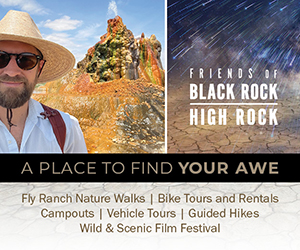Beyond the Playa
Spring/Summer 2025
Burning Man’s impact on Nevada goes beyond the desert.
BY MEGG MUELLER
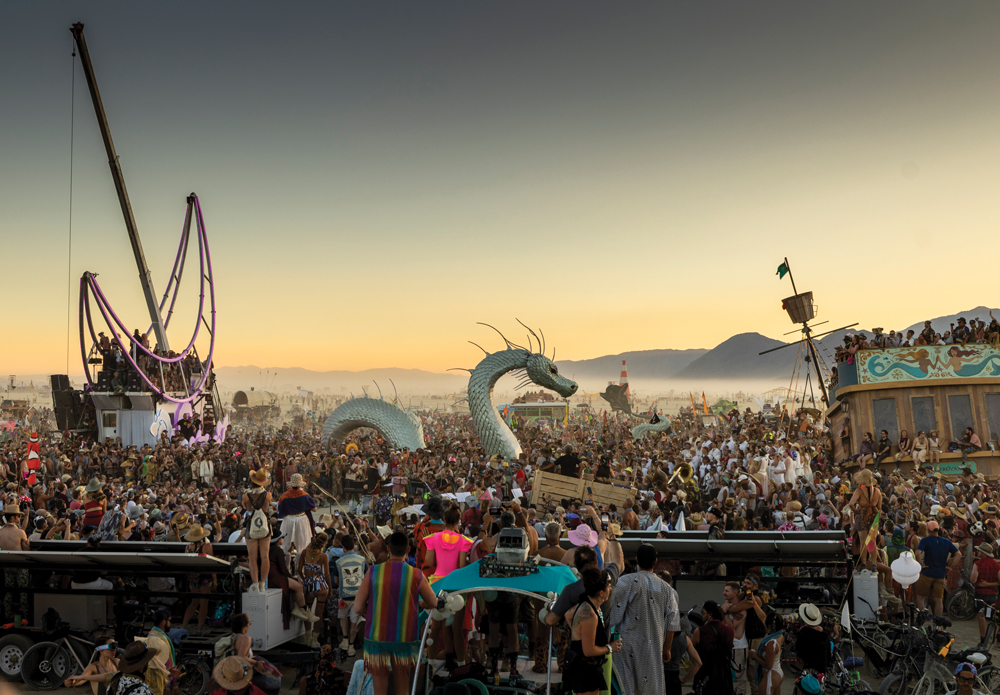
The annual Burning Man festival, held in the Black Rock Desert north of Reno, is an iconic event where creativity, radical self-expression, and community thrive. But the weeklong gathering leaves a lasting imprint on Nevada that extends far beyond the event itself.

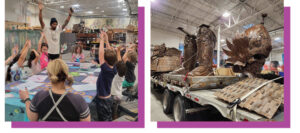
Radical Self Expression
Burning Man is renowned for its art installations, which can be massive, interactive, or surreal—and sometimes all of the above. For Nevada, the festival has helped foster a year-round culture of creativity and artistic innovation.
Some of the installations that appear on the playa are crafted in art studios around the world, but many begin in Reno due to its proximity to the playa. These art projects require months of planning and preparation. As a result, Nevada has become home to a growing community of artists, engineers, and creators who are engaged in projects throughout the year.
The Reno area has certainly benefited from this artistic influx. One of the most notable examples is The Generator, which opened in 2013 as an artist and maker space. The site began as a space for those creating Burning Man projects, but it’s now become a permanent hub for local artists and fabricators. Although it still produces works for Burning Man, The Generator has grown to offer workshops and classes for artists and would-be artists, along with events that engage kids in the artistic process.
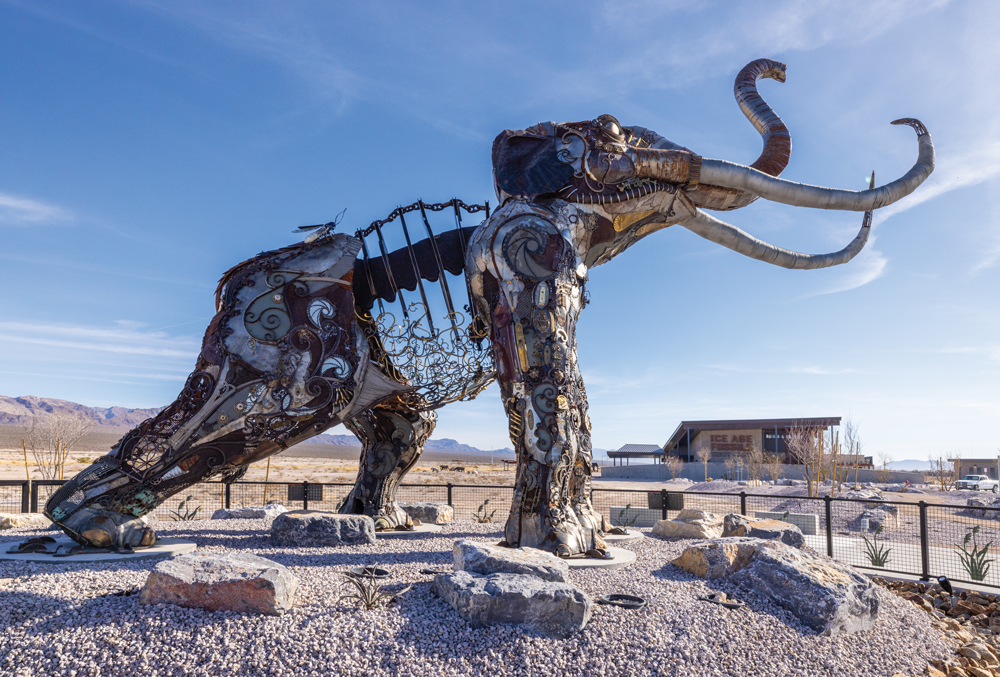
Communal Effort
Despite popular belief, most of the art installations first showcased at Burning Man are not burned. Some pieces are bought by collectors or taken home by the artists, while others find their way to museums and private business. Many have found homes in public spaces around the state, giving the public a chance to get a sense of the scale and artistry on display at the festival.
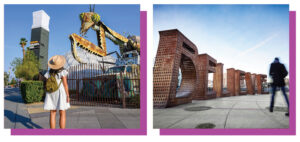
The “Believe” sign and “Space Whale” sculpture in downtown Reno are examples of how Burning Man art contributes to the city’s cultural landscape. Acoss the city, there are more than a dozen pieces of art that debuted on the playa.
Other installations have made their way to Las Vegas, including “Bliss Dance,” “Big Rig Jig,” and a 55-foot mantis that shoots flames from its antenna. Most recently, “Monumental Mammoth” became a permanent feature of Ice Age Fossils State Park.

While larger cities are obvious places to share the sculptures after the playa, the town of Fernley is also home to public art inspired by the festival. The city collaborated with the Black Rock Arts Foundation to create a program called Big Art for Small Towns. Three pieces of public art—”Desert Tortoise,” “Rockspinner 6,” and “Bottlecap Gazebo”—live in the downtown art park.
Leave No Trace
Burning Man is deeply rooted in sustainability and environmental responsibility. The principle of “Leave No Trace” is central to the event’s philosophy, which asks participants to leave the desert as they found it. While not everyone adheres to this tenet, caring for the planet is a massive educational opportunity for all attendees.
Additionally, the festival has been a testing ground for sustainable technologies. Solar power, water purification systems, and other innovations have brought the event closer to its goal of net zero impact. These innovations don’t end on the playa, as their usefulness is often applicable elsewhere. One of the event’s partners is Sunbelt Rentals. Working with Black Rock City’s operations department, among others, they came up with a renewable energy technology they later used at the 2024 Super Bowl.
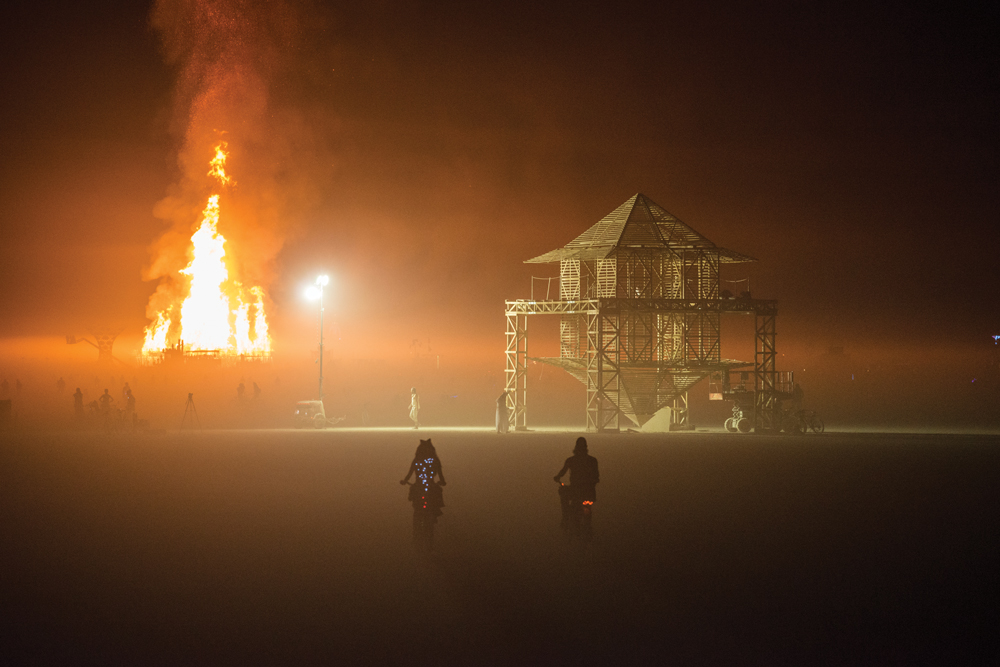
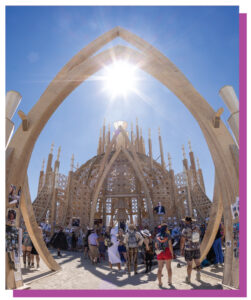
Commodification
While one of the 10 principles of Burning Man is decommodification, the event has led to significant economic benefits for Nevada. Each year, Burners from across the globe converge on the state, boosting local businesses from gas stations to hotels and restaurants in Reno, Fernley, and other nearby cities. However, the economic impact isn’t limited to the festival week alone.
The preparation for Burning Man brings a steady flow of visitors and commerce to Nevada throughout the year. Artists, builders, and participants arrive months in advance to construct art, prepare camps, and coordinate logistics.
Radical Inclusion
What began as a countercultural event has become a part of the state’s identity, shaping its culture, economy, and values. The festival’s ethos of creativity, sustainability, inclusivity, and community-building inspires a broader cultural shift. Its impact is seen and felt, but it is also subtly working behind the scenes to shift perspectives, engage science and technology industries, and inspire the festival’s ideals.

